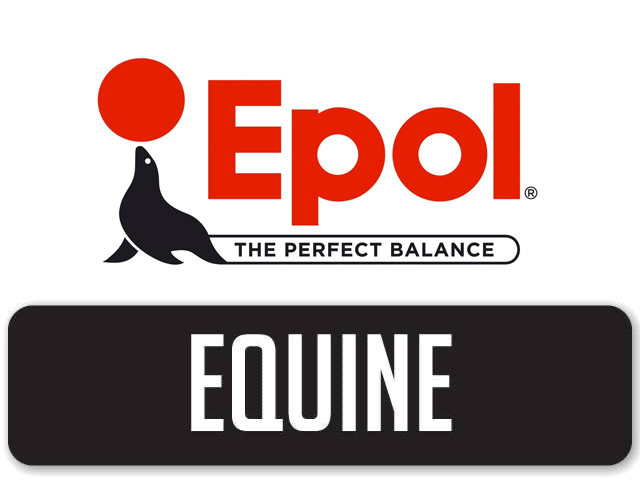Winter is now upon us and with it brings lower quality grazing and hay, while certain areas of the country are still affected by shortages due to drought.
Forage (hay and grazing) is a vital part of the horse’s diet as it provides a valuable portion of the daily energy requirement. The greater the quantity of forage eaten by the horse the less likely it would be to feed large amounts of concentrates. Forage also serves to sustain a healthy digestive environment as well as producing heat during the fermentation process of digestion. This heat production helps the horse to stay warm and comfortable in cooler temperatures. Fibre can also increase water intake, which provides a unique water reservoir in the hindgut which can prevent dehydration and electrolyte loss during hard exercise. Ultimately forage is what the horse was naturally designed to eat.
The average horse requires at least 1.5-2% of body weight in forage per day. A 500kg horse for example would require at least 7.5-10kg of forage per day.
What are Forage Extenders?
Forage extenders (also known as hay replacers) are designed to replace a portion of the forage in the horse’s total daily diet in times when hay or grazing may be of poorer quality or not available at all.
What is currently available in the market?
Forage extenders are available in many forms such as super fibres (soya hulls and beet pulp) or chopped hay options (chaffs and cubes).
• Super fibres- are a useful fibre addition as they are more digestible than traditional fibre sources and also provide a much higher level of energy per kg. This makes them particularly suitable for hard working horses and those that struggle to maintain weight.
Soya Hulls are the outer coating of the soyabean and are a common super fibre in manufactured feeds. Although highly digestible, soya hulls are not that palatable and thus not all horses take to them well when fed alone
Beet pulp, a by product of the sugar industry, is far more palatable and is therefore the more widely used super fibre. However beet pulp is not native to South Africa and is therefore more expensive than traditional fibres. Beet pulp must be soaked prior to using but this has the added benefit of being particularly useful for horses with poor dentition.
Super fibres generally have a low NSC value (sugar and starch) which makes them ideal for horses suffering from Gastric Ulcers, Laminitis, Tying-up, and Cushings for example. As they are more digestible than traditional forage extenders, they can be fed at slightly lower levels. For example at 0.5%- to 1% of body weight per day. For a 500kg horse that is 2.5-5kg per day.
• Chaffs – chaffs are a good forage extender, however, caution is advised as some chaffs have a coating of molasses which may not be desirable for all horses. Chaffs also don’t provide a daily supply of vitamins and minerals and so an additional supplement may be needed if no concentrate feeds are fed.
• Hay cubes – an excellent example would be Equus Nice n Easy cubes. They contain added vitamins and minerals and are therefore more complete than chaffs. The vitamin and mineral fortification is, however, not as high as standard concentrates, making them usable at higher levels if needed or alongside additional feedstuffs.
Hay cubes are an ideal alternative for horses with respiratory problems as it limits their exposure to inhalation of dust. They can also be ideal for horses struggling with inflammatory disorders of the bowel, as long stemmed hay can irritate the gut. Horses with dental issues particularly benefit from hay cubes as they often struggle to chew and digest long stemmed hay and chaffs. Hard working horses can sometimes lose their appetites during competition leading to a reduced intake of forage. This may expose horses to digestive upsets and lead to under performance and loss of condition. Hay cubes can be ideal under these circumstances.
How much can I feed?
The answer to this question is dictated by the circumstances in which the horse finds itself as horses are all individual. The advice of a nutritional advisor is recommended, however, the following three points should be considered for the use of forage extenders:
1. If the grazing is not of good quality, but hay is, then the need to use forage extenders is reduced as more hay can be fed. 500g-1kg per day of a hay extender should be more than adequate especially if concentrates are also being used.
2. If hay and grazing is not of good quality then 1-4kg per day of a forage extender can be fed together with concentrate feed (if needed)
3. If no grazing and hay is available, forage extenders are used as a replacement and can be fed up to 1% of body weight for short periods of time.
Notes for using forage extenders Horses are designed to eat small amounts of feed over the whole day. When forage extenders are fed, consumption time is faster as the horse requires less chewing time when compared to long stemmed hay. It is for this reason that feeding of forage extenders is recommended to be spread out across the day in small meals. This feeding recommendation will also avoid boredom.
Due to horses being designed to eat little and often, there is a constant flow of gastric acid within the stomach. In order to buffer this, saliva is needed. Horse’s only produce saliva when they chew and therefore if left for long periods of time with nothing to chew or if chewing time is reduced they can be prone to gastric ulcers. Forage extenders cannot for this reason totally replace long stemmed hay and grazing for long periods of time. Even if hay and grazing are of little value some long stemmed hay must still be fed.




